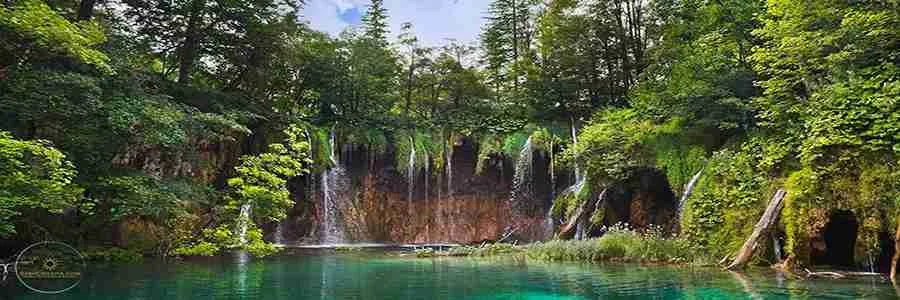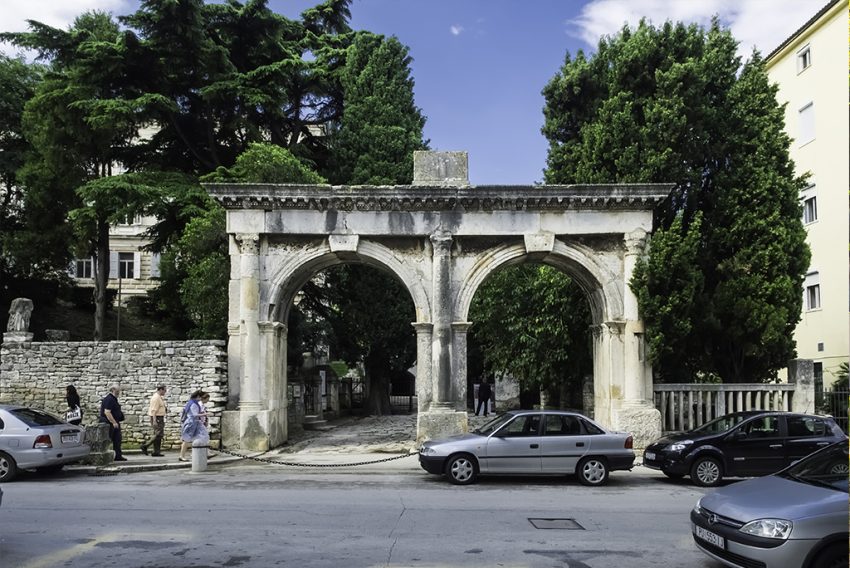The Twin Gates – Pula (Croatian: Dvojna vrata ) is a Roman city gate located in Pula – Istria – Croatia. It was built during the late 2nd century as a double arched gate (thus the name). It was one of the ten city gates of Pula, standing at the north side of the capitol.
In antiquity, Pula was surrounded by walls. In modern times, these were knocked down out of necessity, due to the expansion of the town core. There were about ten city gates. Of which, the Porta Gemina and part of the walls connecting it to Giardin square are still visible today. In the Middle Ages, the gates were buried underground. They were only recently dug out and brought back to light.
The two openings are decorated with three pilasters with composite capitals. The relief wreath above connects the composition into a harmonious unit. The slats once used for lowering the lattices in order to close the gate are preserved. The Twin Gates also contain a plate inscribed with the name of Lucius Menacius Priscus, a town councilman and senator. He personally funded the construction of one of the town’s water supply networks. The plate wasn’t originally part of the monument; it was found next to it, and placed on its upper central part in the late 19th century.
Today, the The Twin Gates – Pula, in front of which were discovered the remains of a partially reconstructed octagonal mausoleum dating to the 2nd or 3rd century AD – lead to the Archaeological Museum of Pula, to the Castle, and a small Roman theatre.

